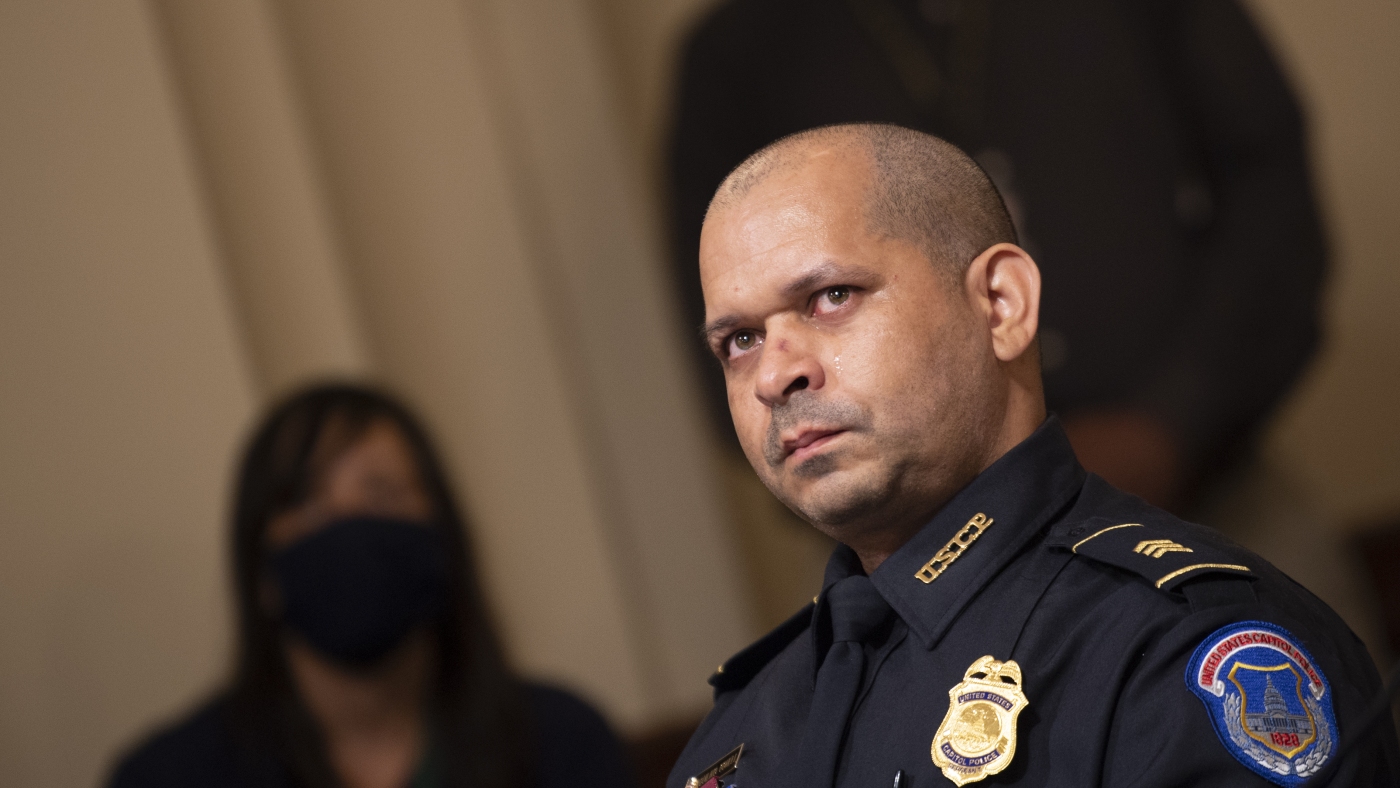Education
Justice Ketanji Brown Jackson Calls on Nation to Remember Ugly Past Truths

Supreme Court Justice Ketanji Brown Jackson on Friday called on the nation to accept some of the ugliest truths in its history as she confronted the debates roiling the country about racism and violence against Black Americans.
In a speech from the pulpit of the Sixteenth Street Baptist Church in Birmingham, Justice Jackson, the first Black woman to serve on the nation’s highest court, said that she made her first trip to Alabama “to commemorate and mourn, celebrate — and warn.” She was the keynote speaker to mark the 60th anniversary of a bombing by the Ku Klux Klan that killed four young girls at the church as they arrived for Sunday morning service.
“If we’re going to continue to move forward as a nation we cannot allow concerns about discomfort to displace knowledge, truth or history,” Justice Jackson told a crowd of hundreds. “It is certainly the case that parts of this country’s story can be hard to think about. I know that atrocities like the one we’re memorializing today are difficult to remember and relive. But I also know that it is dangerous to forget them.”
“We cannot forget because the uncomfortable lessons are often the ones that teach us the most about ourselves,” she added. “We cannot forget because we cannot learn from past mistakes we do not know exist.”
Justice Jackson’s speech was a rare occasion. The current justices on the court do not often make public appearances, and when they do, it is typically to lecture at law schools or in other academic settings. Although many of the justices have appeared at judicial conferences and spoken at college commencements, only two — Justice Jackson’s predecessor, Justice Stephen Breyer, and Justice Thurgood Marshall, the first Black man to serve on the court — have made notable appearances at civil-rights-related events.
Justice Jackson’s speech at the church was an explicit nod to her own role in history as well as the country’s ongoing battle for racial justice. During her confirmation hearings last year, Republicans who oppose the teaching of slavery and racism as part of the nation’s history frequently questioned her about her support of civil rights.
In her speech, Ms. Jackson acknowledged her “exhausting” journey to the high court, which she said was part of the reason she accepted the invitation to deliver the keynote address at the event.
“I come with the understanding that I did not reach these professional heights on my own, that people of all races, people of courage and conviction cleared the path for me in the wake of the horrible tragedy that snuffed out the brief lives of those four little girls inside this sacred space,” she said. “I’ve come to Alabama with a heart filled with gratitude, for unlike those four little girls, I have lived, entrusted with the sole responsibility of serving our great nation.”
In many respects, Ms. Jackson’s speech was an example of something that always underscored her appointment: Her voice as the first Black female Supreme Court Justice could be as influential as her votes.
The speech comes less than three months after the Supreme Court struck down affirmative action, overturning decades of precedent by declaring race-conscious college admissions programs at Harvard and the University of North Carolina unlawful.
Ms. Jackson’s appointment was never expected to change the outcomes of the majority-conservative court, and she recused herself from the Harvard case because of a conflict of interest in serving on governing boards at her alma mater.
But in searing dissents, Ms. Jackson issued a forceful rebuke of the court’s position that America was effectively in a post-racial era. “With let-them-eat-cake obliviousness, today, the majority pulls the rip cord and announces ‘colorblindness for all’ by legal fiat,” she wrote in her dissent in the University of North Carolina case. “But deeming race irrelevant in law does not make it so in life.”
In her opposition to the decision, she also took on the court’s only other Black member, Justice Clarence Thomas, a longtime skeptic of affirmative action.
Justice Thomas, speaking from the bench when the decision was announced, said the country had moved past the struggles of the 1950s and ’60s for equal access to education for Black Americans. “This is not 1958 or 1968,” he said. “Today’s youth do not shoulder moral debts of their ancestors.”
In her speech in Birmingham, Justice Jackson spoke of how her parents taught her about the racial violence that occurred in the quest for civil rights, including how Martin Luther King Jr. had sat in a Birmingham jail just months before he eulogized the four little girls at a funeral attended by what the police estimated were 4,000 people, many of them overflowing into the street outside the church’s front door.
“There was a reason that my parents felt it was important to introduce me to those uncomfortable topics and it was not to make me feel like a victim or crush my spirits,” Justice Jackson said. “To the contrary, my parents understood that I had to know those hard truths in order to expand my horizons. They understood that we can only know where we are and where we’re going, if we realize where we’ve been.”
Before Ms. Jackson took the stage, the church bells tolled four times at around 10:22 a.m., marking the minute that the bomb exploded, killing the four girls — Denise McNair, 11, and Carole Robertson, Addie Mae Collins and Cynthia Wesley, all 14.
“They could have broken barriers. They could have shattered ceilings, they could have grown up to be doctors or lawyers or judges appointed to serve on the highest court in our land,” Justice Jackson said.
In the audience sat Sarah Collins Rudolph, who lost her sister, Addie Mae, her friends and her eye in the bombing. The church also rang two more bells for Johnny Robinson and Virgil Ware, who were killed in an uprising following the bombings.
Just days before the bombing, Gov. George Wallace of Alabama famously said that “white people nowhere in the South wanted integration,” and that what was needed instead were “a few first-class funerals.”
“So yes, learning about our country’s history can be painful, but history is also our best teacher,” Justice Jackson said. “Yes, our past is filled with too much violence, too much hatred, too much prejudice. But can we really say that we are not confronting those same evils now?”
Kitty Bennett contributed research.

Education
Video: Several Killed in Wisconsin School Shooting, Including Juvenile Suspect

new video loaded: Several Killed in Wisconsin School Shooting, Including Juvenile Suspect
transcript
transcript
Several Killed in Wisconsin School Shooting, Including Juvenile Suspect
The police responded to a shooting at a private Christian school in Madison, Wis., on Monday.
-
Around 10:57 a.m., our officers were responding to a call of an active shooter at the Abundant Life Christian School here in Madison. When officers arrived, they found multiple victims suffering from gunshot wounds. Officers located a juvenile who they believe was responsible for this deceased in the building. I’m feeling a little dismayed now, so close to Christmas. Every child, every person in that building is a victim and will be a victim forever. These types of trauma don’t just go away.
Recent episodes in Guns & Gun Violence
Education
Video: Biden Apologizes for U.S. Mistreatment of Native American Children

new video loaded: Biden Apologizes for U.S. Mistreatment of Native American Children
transcript
transcript
Biden Apologizes for U.S. Mistreatment of Native American Children
President Biden offered a formal apology on Friday on behalf of the U.S. government for the abuse of Native American children from the early 1800s to the late 1960s.
-
The Federal government has never, never formally apologized for what happened until today. I formally apologize. It’s long, long, long overdue. Quite frankly, there’s no excuse that this apology took 50 years to make. I know no apology can or will make up for what was lost during the darkness of the federal boarding school policy. But today, we’re finally moving forward into the light.
Recent episodes in Politics
Education
Video: Los Angeles Bus Hijacked at Gunpoint

new video loaded: Los Angeles Bus Hijacked at Gunpoint
transcript
transcript
Los Angeles Bus Hijacked at Gunpoint
The person suspected of hijacking a bus which killed one person, was taken into custody after an hourlong pursuit by the Los Angeles Police Department early Wednesday morning.
-
“Get him.”
Recent episodes in Guns & Gun Violence
-

 Health1 week ago
Health1 week agoNew Year life lessons from country star: 'Never forget where you came from'
-
/cdn.vox-cdn.com/uploads/chorus_asset/file/24982514/Quest_3_dock.jpg)
/cdn.vox-cdn.com/uploads/chorus_asset/file/24982514/Quest_3_dock.jpg) Technology1 week ago
Technology1 week agoMeta’s ‘software update issue’ has been breaking Quest headsets for weeks
-

 Business5 days ago
Business5 days agoThese are the top 7 issues facing the struggling restaurant industry in 2025
-

 Culture5 days ago
Culture5 days agoThe 25 worst losses in college football history, including Baylor’s 2024 entry at Colorado
-

 Sports5 days ago
Sports5 days agoThe top out-of-contract players available as free transfers: Kimmich, De Bruyne, Van Dijk…
-

 Politics4 days ago
Politics4 days agoNew Orleans attacker had 'remote detonator' for explosives in French Quarter, Biden says
-

 Politics3 days ago
Politics3 days agoCarter's judicial picks reshaped the federal bench across the country
-

 Politics2 days ago
Politics2 days agoWho Are the Recipients of the Presidential Medal of Freedom?














